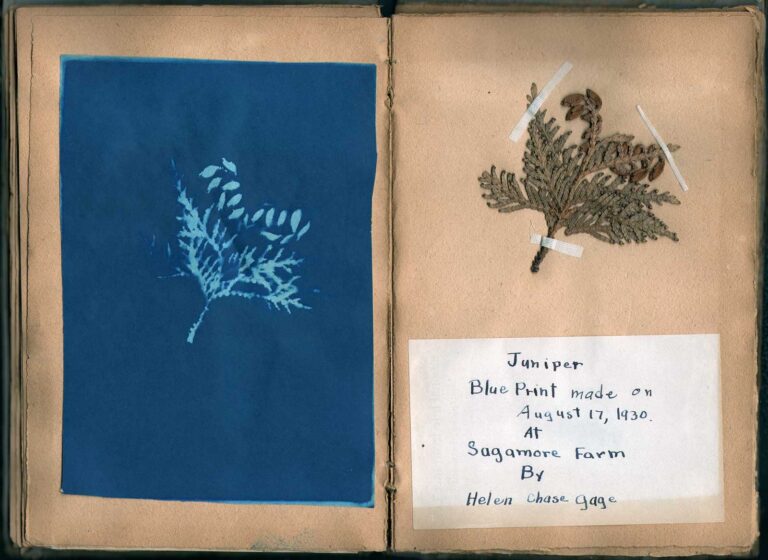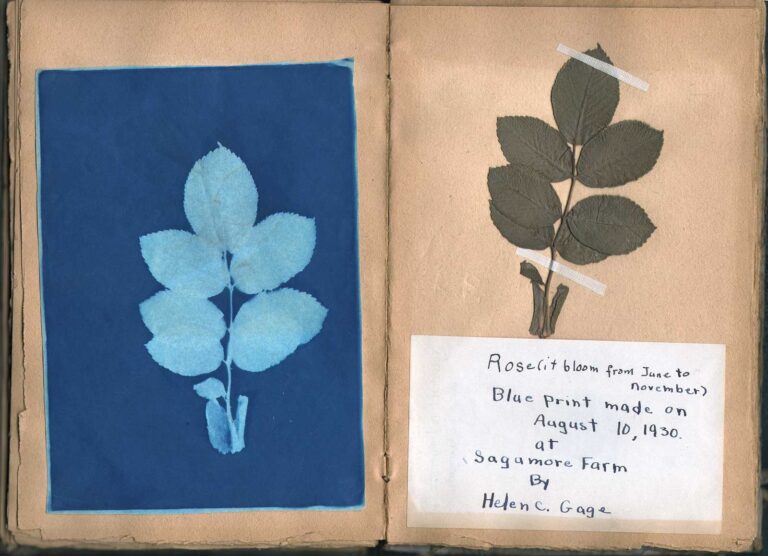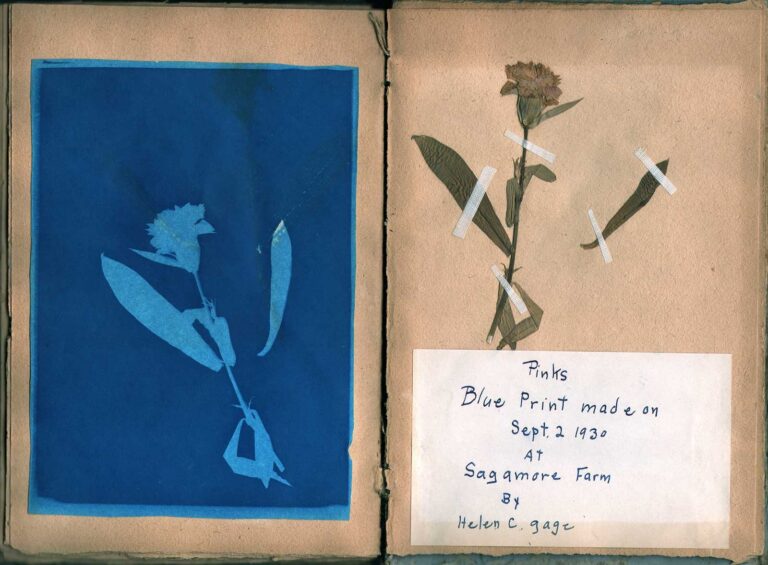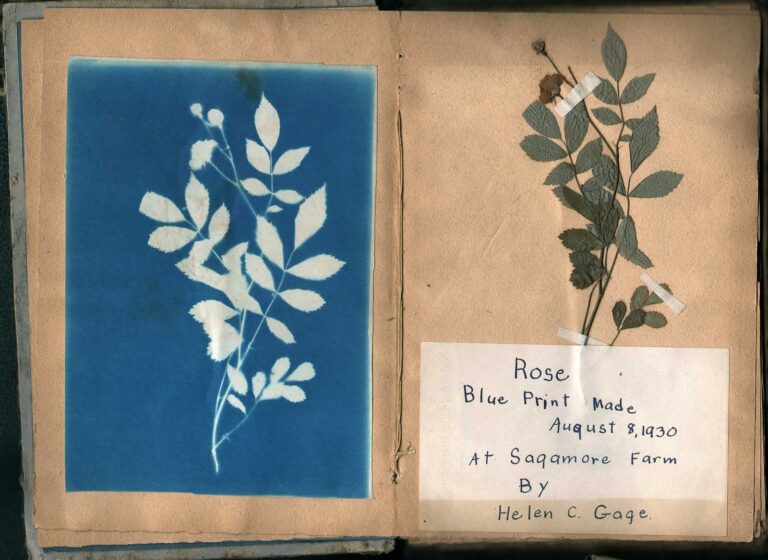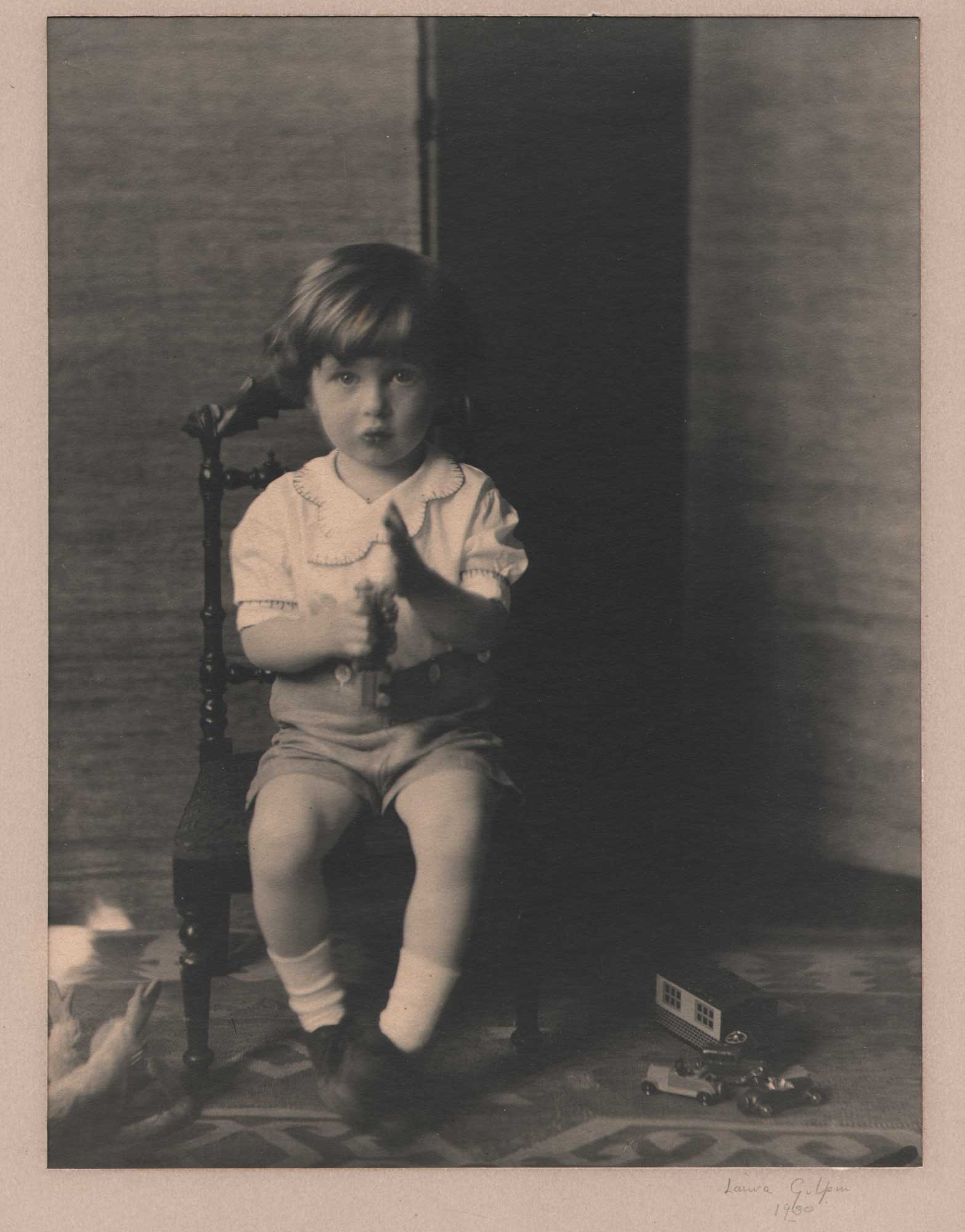
Child Playing with Toy Train
Seated in his chair, this charming portrait of an unknown little boy plays with a toy train while looking towards the artist.
Laura Gilpin: 1891-1979
The following Biographical Note is courtesy of the Laura Gilpin Papers finding aid at the Amon Carter Museum of American Art:
Laura Gilpin (1891–1979) was a photographer, writer, designer, and publisher whose career spanned seven decades. Gilpin first made photographs at the 1904 Louisiana Purchase Exposition in St. Louis with a Brownie camera she had received for her birthday. In 1908 she began experimenting with autochromes, an early color process. She studied at the Clarence White School in 1917–18, and her early work is strongly pictorial, reflecting White’s influence. Gilpin returned to her native Colorado Springs to establish a publishing company and her own studio for portraiture and architectural work, but left to work for the Boeing Aircraft Corporation during World War II. After the war she settled in Santa Fe, New Mexico, where she supported herself with commercial assignments while working on her personal projects. She published The Pueblos (1941), Temples in Yucatan (1948), and The Rio Grande (1949), contributing both photographs and text. However, The Enduring Navaho (1968) represents her most significant project. Gilpin began photographing the Navajo in the early 1930s and continued throughout her career. By the 1940s she had abandoned the pictorial style, and her photographs of the Southwest and its inhabitants reflect a more straightforward approach. Gilpin left her photographic estate of 27,000 negatives and over 20,000 prints to the Amon Carter Museum of American Art upon her death in 1979. In 1986 the museum organized Laura Gilpin: An Enduring Grace, a major retrospective of Gilpin’s work, and published an accompanying catalogue.
